You are likely one of three types of people when it comes to Paris: A first time visitor, someone who loves the city and returns multiple times, or a person who has never been to Paris and probably never will. For those folks who return time and time again, they quickly determine it’s not necessary to re-visit the Eiffel Tower, Notre Dame, or any of the other well-known icons of Paris (in all fairness, I could visit the Louvre and the Musée d’Orsay on each visit). What they begin to discover is a city full of French uniqueness that many first-time tourists never experience. Just by walking and keeping your eyes open, you’ll find the Wallace Fountains (read Wallace Fountains here), the remaining pissoirs (read Please, No Pissoirs in Public! here), medieval carvings on the sides of buildings (read One-Eyed Kate here), the small shops, talk with the “pee ladies” (read The Pee Ladies of Paris here), the city’s original Roman amphitheater, and medallions imbedded in the concrete marking the location of a hidden river flowing below your feet (read A River Runs Through It and Under It here). They also learn to look up at the buildings so as not to miss the plaques, reliefs, and other unique aspects of the architecture.
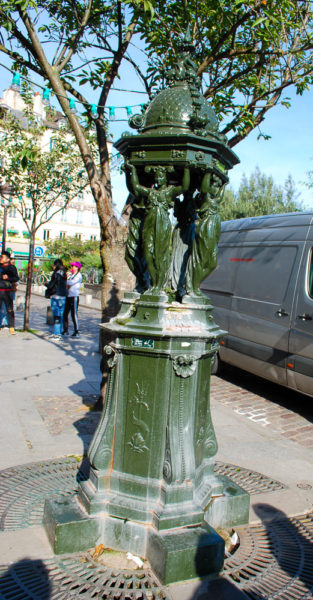
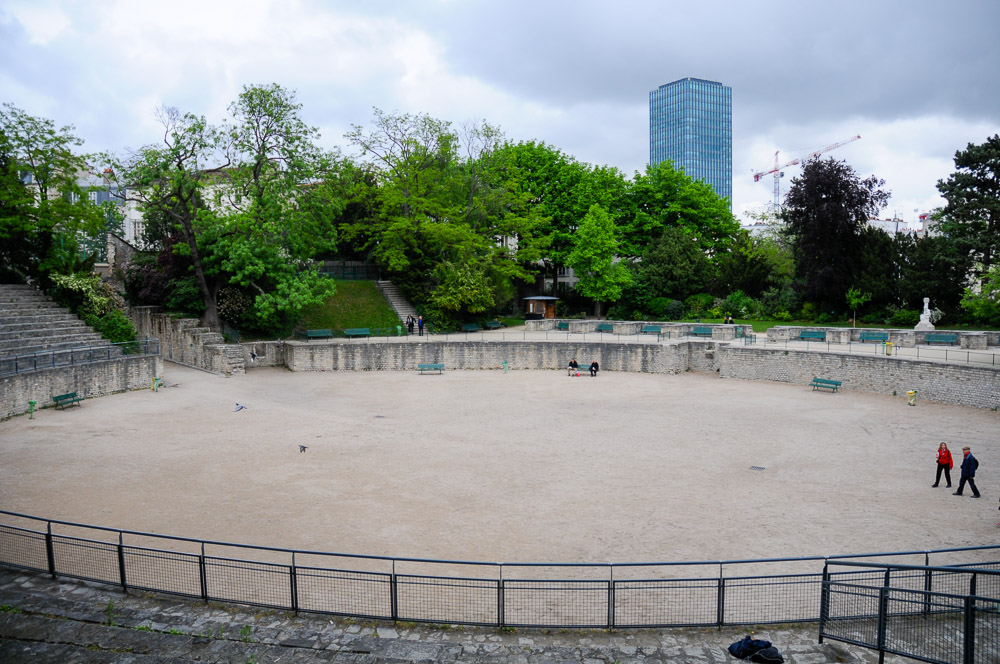
One of the cultural icons you can’t miss if you walk along the Seine River are the bouquinistes (boo-keen-eest) or bookstalls where you can buy second-hand books, engravings, prints, magazines, collector’s stamps, and antique postcards.
Did You Know?
I’ve said this over and over. The world’s largest museum is likely twelve feet below the streets of Paris. Well, here’s another example. A medieval crypt has been discovered below an underground parking garage in the Latin Quartier. It is located on Rue Pierre-Nicole (I’m attempting to confirm the street number but I think it is either no. 14 bis or no. 11). The crypt is all that remains of the 7th-century church built by Saint Eloi—Église Sainte-Marie-des-Champs. It was here that the remains of the French kings were interred until that tradition shifted to the Basilique Cathédrale de Saint-Denis. Unfortunately, the medieval church was destroyed during the French Revolution. The recent floods have damaged the crypt and the city would like to begin restoration and then open the crypt up to the public. They are in negotiations now with the property owner. Let’s hope an agreement can be reached so that another excellent example of medieval Paris becomes available to us. Learn more here.
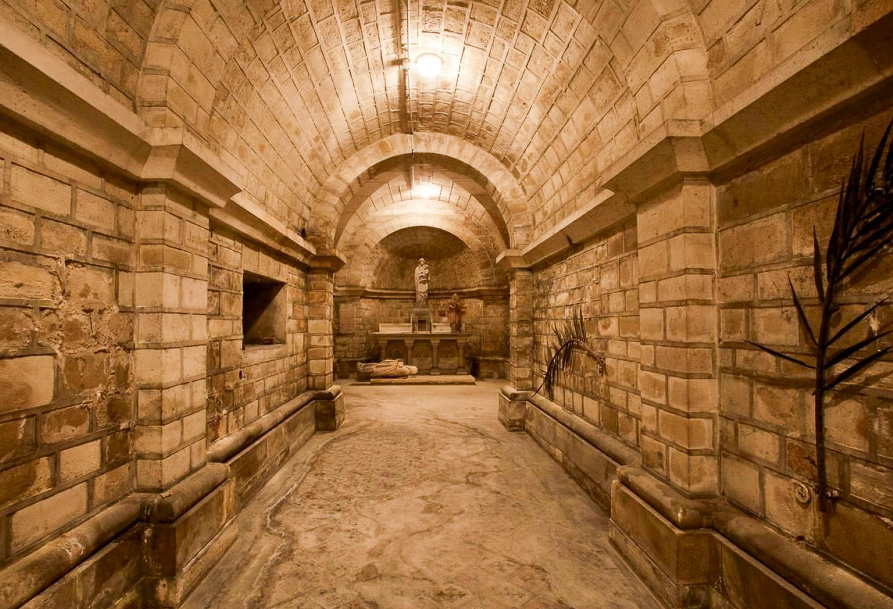
Medieval Origins: True or False?
The story has it that a ship carrying books sank in the Seine as it passed through the heart of the city. The books were recovered, taken onshore to be dried out, and then sold on the quais above the river. These books became known as bouquins or, small old bashed books. The name was derived from buch or, the German word for book (some think it originated from the Dutch word meaning small book, boeckin). Reportedly, this happened in the late 15th-century.
The bouquinistes established themselves on the Pont Neuf until they got kicked off the bridge (the established bookstores complained) and relocated to either side of the river where they were allowed to sell their books on holidays and hours when the bookstores were closed.
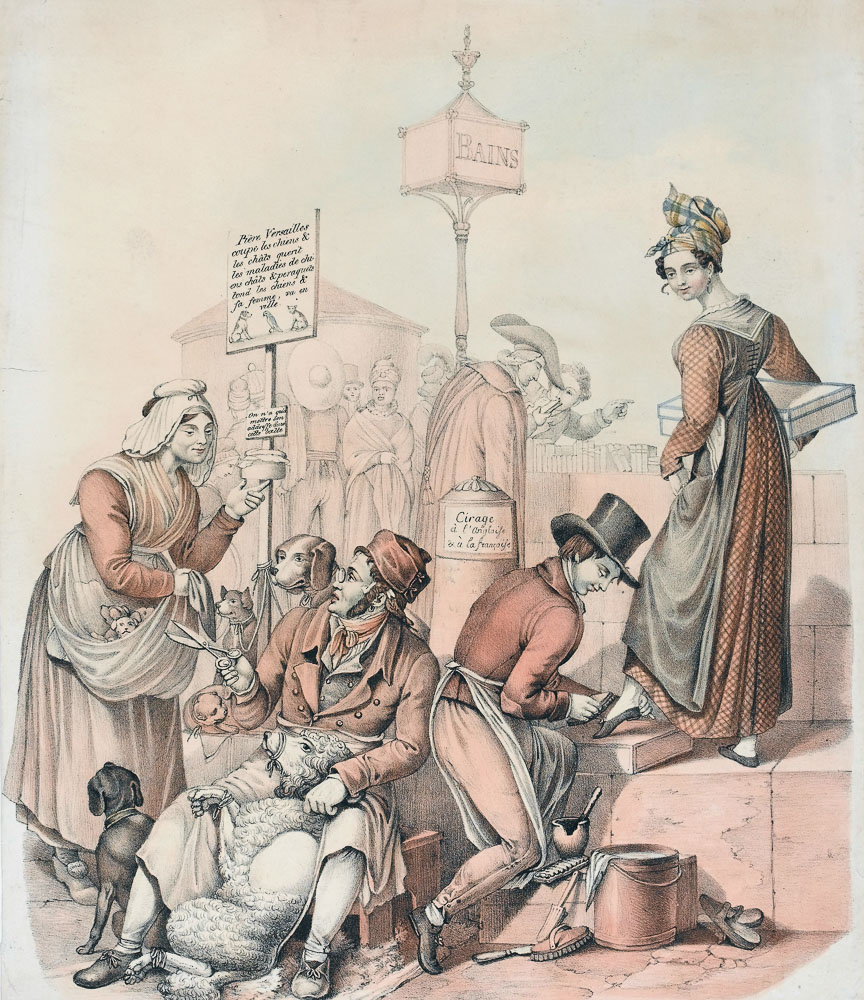
The bouquinistes surged in popularity during the French Revolution. Although they were a leading source of the revolutionary pamphlets leading up to and during the Revolution, it was only after the revolutionaries confiscated the nobilitys’ property that the large and expensive private book collections inevitably found their way to the bookstalls along the river. Ordinary citizens were immediately given access to affordable and much sought-after books. After the revolution, Napoléon expanded the bouquinistes and allowed them to sell anything as long as it wasn’t “immoral.” His nephew, Napoléon III, allowed the bouquinistes to install the bookstands on the Left Bank quays (in this era, only the Right Bank was populated by the bouquinistes).
During the Nazi occupation of Paris, the bouquinistes assisted the French Resistance by hiding coded messages in the pages of the books. It was impossible for the Germans to track these down due to the vast number of books (anyway, if the Germans knew coded resistance messages were being transported this way, wouldn’t they have just shut down the bouquinistes?)
Bookstalls
What do you do if you want to drop out and become a bouquiniste along the Seine? Well, first you have to purchase four boxes (six feet long by three feet wide) but the waiting list is about eight years—there are about 250 wannabe bouquinistes ahead of you. Once you get your boxes, you’ll be exempt from paying taxes but you will have to pay for a license. However, you’re required to ensure the boxes remain graffiti free and painted in the historical green shade of the old passenger trains. Most bouquinistes specialize in certain categories such as fashion, history, cinema, etc. You’ll need to source your books through clearance sales, flea markets, and estate sales. As a newbie bouquiniste, you will likely be given a not-so-coveted location as selection is based on a seniority system.
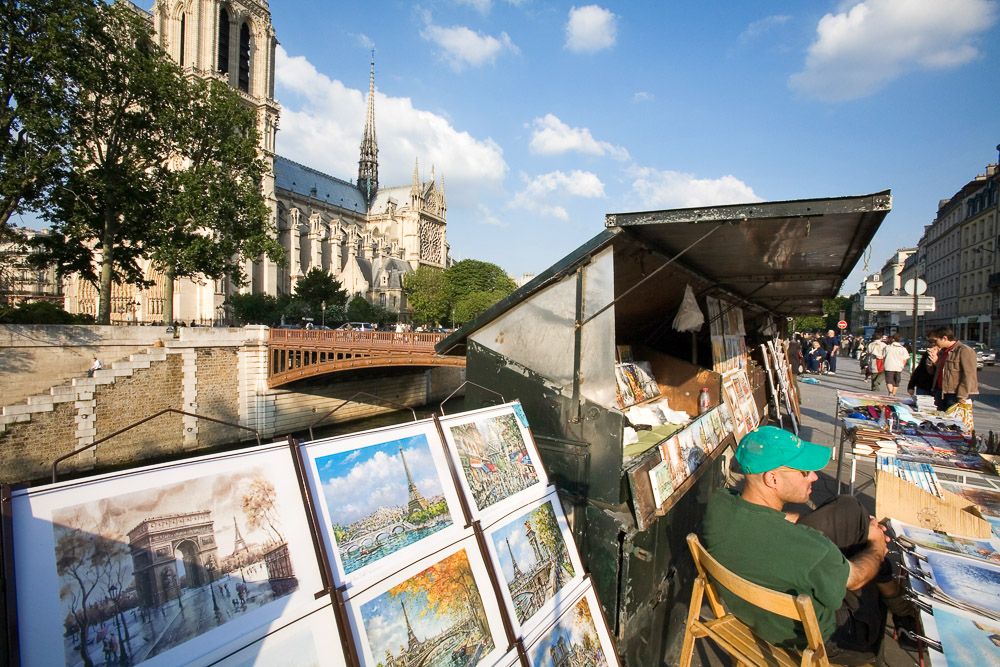
But the most important pre-requisite to becoming a bouquiniste is to make sure you have someone else to support you.
Struggling Sales
France has always had a love affair with books and authors (e.g., France purchased twice as many printed books in 2017 as Americans). Unfortunately, the internet has created the same problems for French retail bookstores as we’ve experienced in the United States over the past twenty years—France has lost 703 or, one-third of its bookstores since 2000. The printed book is giving way to digital versions as younger clientele prefer not to carry books (or remember what an old book smells like).
Book or souvenir sellers? Bookstalls or souvenir stands? These are the questions being asked today and it has become quite a dilemma for both the booksellers and the politicians. Many of the bouquinistes now complement their main business by selling cheap Parisian souvenirs (by law, only one of your four boxes is allowed to carry souvenirs). The bookstalls are located in tourist areas where potential clients don’t read French and are more attracted to the small plastic models of the Eiffel Tower or magnets. There is a higher profit margin in those Chinese made trinkets than in the second-hand books with many of the bouquinistes reporting 75% of their profits come from selling souvenirs.
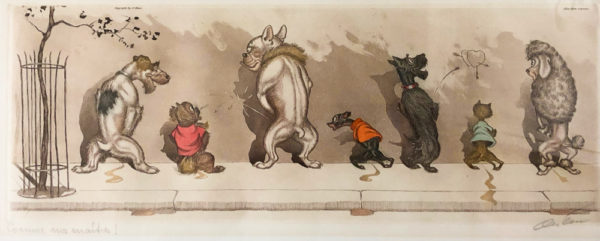
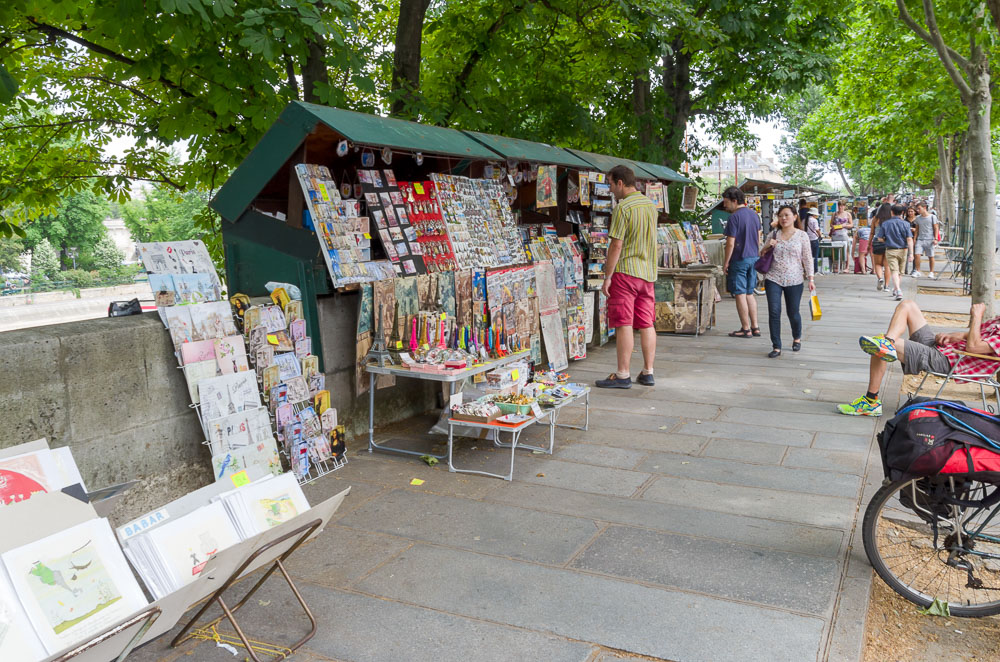
Unesco Status
For those of you who travel around the world, you’re familiar with a site’s designation as being a UNESCO World Heritage site. It signifies a site as having an “intangible cultural heritage.” The banks of the Seine River were granted UNESCO status in 1991 and now the Cultural Association of Paris Bouquinistes has applied for UNESCO status. It is their goal to preserve this cultural icon of French society. The application is fully supported by the Paris City Council and the mayor of the 6th arrondissement (district) where the majority of the bouquinistes are located. It will likely take at least two more years before learning whether UNESCO accepts their application.
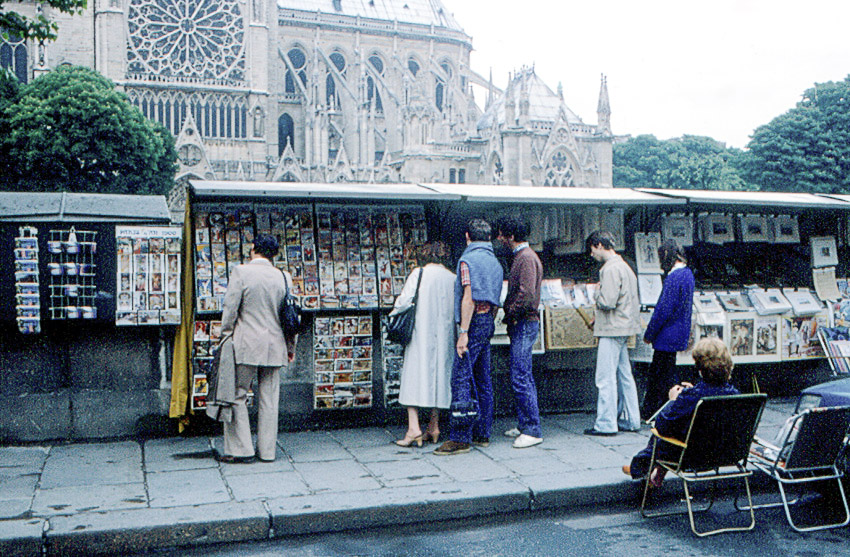
Why wouldn’t they? The Brazilian samba, Belgian beer, and Mongolian calligraphy all have UNESCO status (I wonder if our friend Dave, the owner of the Belgium Monk pub, knows the beer he sells is protected).
However, the days of selling cheap but profitable souvenirs might be over with UNESCO status. This leads us to the old adage, “Be careful what you wish for.”
Recommended Reading and Viewing
Reading a book can never replace a leisurely stroll along the Seine and stopping at the bookstalls. The best suggestion I have for you is to visit Paris and take in the bouquinistes.
What’s New With Sandy and Stew?
We are home after a month-long trip to the Amazon River. Sailing on the ms Prinsendam (Holland America), we entered the river from the Atlantic side through its delta. The silt discharge is so immense that while on the “Amazon bar”—a giant sandbar situated outside the delta—the ship only had fourteen feet clearance from its keel to the bottom of the ocean. Entering the river, you are immediately struck by two things: the color of the water is creamy white (from the silt) and the immense width of the river.
We came back with two lasting impressions of traveling almost one thousand miles upriver to the city of Manaus. Never did we envision such a wide river where in some places, you can’t see the opposite shore (in many spots, it takes three and a half hours by boat to cross the river). Second, it’s not the Amazon that one should concentrate on but the tributaries and small rivers which feed the Amazon. Those rivers are considered “black” due to the color of the water (as opposed to the “white” of the Amazon). Where the waters of the tributaries meet the waters of the Amazon is a definitive line (white on one side and black on the other) marking the exact spot of convergence. Traveling on the tributaries and small rivers is where you will see the human and animal life, both on land and in the water. We were there at the end of the dry season and the river was at its lowest level (one canoe trip was cancelled). We encountered quite a bit of rain during our last two days in the Amazon basin and were told that it marked the beginning of the rainy season which officially begins on the first of December.
The river boats typically have a shallow draft and three decks (bottom deck for the cattle and top two decks for passengers). When the boats aren’t used for tourist trips, they become river taxis taking people from one city to another. In Manaus, there are only two ways to get in and out: air and water. We went piranha fishing on one of these boats. Able to get upstream on the small rivers, our boat snuggled up to the side of the river where we threw our lines in with large chunks of meat used for bait. Probably half the people caught piranhas (Sandy caught one and I didn’t—very typical of our fishing expeditions). The piranhas that were caught included the red-bellied (the most vicious of the species), silver, black, and yellow piranha. You can’t see their razor-sharp teeth until the upper portion of the mouth is pulled up. The catfish are poisonous, so not a good catch. The electric eel puts out about 250 volts and can kill a human who comes too close. We learned how to do the “string-ray shuffle” or, how to walk among a carpet of stingrays without getting stung. Walks through the rain forest included lessons on which trees not to touch, ant hills not to stand on, and making condoms using the latex liquid cut out of the bark of a rubber tree (yep, you read the last one correctly). Our guide had 30-years of experience taking people through the jungle and rain forest. I thought it was odd that he walked through the jungle in bare feet.
It was a good trip and confirmed what I thought might happen. That is, we want to visit the Amazon again but the next time will be from the Pacific side where the head lands of the river originate. I read somewhere that seventy percent of the world’s species can be found in this large area (by the way, the Amazon Basin is about the same size as the United States). I think we’ll time it so the river is a little higher. One of our disappointments on this trip was not seeing the diversity of animals and birds we thought we’d experience. On the next trip, we’ll make sure we schedule our excursions either early morning or in the evening when we think there would be more animal and bird activity.
One thing I’m sure of about this 28-day voyage (with fourteen sea days) is that I made tremendous progress on the new book, Where Did They Put the Gestapo Headquarters? A Walking Tour of Nazi Occupied Paris. I’m confident we’ll get Volume One published next year. I’m also confident that it will be the best book in our seven-book series on historic Paris.
To view many pictures of our little adventure, please visit our Pinterest site (go to Pinterest and search stewrossdiscovers).
Happy New Year to all of you!
Someone Is Commenting On Our Blogs
I’d like to thank Deborah H. for her comments regarding the Coco Chanel blog (read it here) we posted on 18 January 2015. Like most people, Deborah didn’t know about the “true” Coco Chanel. Thanks Deborah for subscribing to our blog site.
If there is a topic you’d like to see a blog written about, please don’t hesitate to contact me. I love hearing from you so keep those comments coming.
Why Would You Want To Buy Our “Walks Through History” Books?
Simple.
You like to travel and experience history and historical events. You like to see original buildings that had a significant impact on the people and events of the history you’re engaged with. You want to know the stories behind the brick and mortar in front of you.
The walking tour books are meticulously researched so you can go directly to those sites and learn about the building’s history as well as an introduction to some of the more interesting people associated with it.
Thank You
Sandy and I appreciate you visiting with us. We have some exciting things on the horizon and we’ll keep you updated as we go along.
Share This:
Follow Stew:
Find Stew’s books on Amazon and iBooks.
Please note that we do not and will not take compensation from individuals or companies mentioned or promoted in the blogs.
Walks Through History
Copyright ©2019 Stew Ross

Hello Stew and Sandy, I’m one of those who visits Paris (not very often) and goes to La Sainte Chapelle and then walks over the bridge to Le Musee Cluny. Every time and on the first day after arrival.
Your articles are so informative and you take me there.
Thank you!!
Hi Myrium;
First, thank you so much for your kind words. We appreciate you being a long time subscriber to our blogs. I’m glad you find them informative and useful. We hear that a lot! Isn’t Sainte Chapelle wonderful? Unfortunately, I’ve talked to people who have visited and thought the downstairs chapel was the “main event” and never made it upstairs. Musée Cluny is one of our favorites. I’m sure you’ve been to Musée Carnavalet but if not, it’s right up there with Cluny. We always try and find an apartment near the Cluny even though it’s an expensive part of town. Again, thanks for your comments and let me know if you ever have any questions or I can be of assistance. STEW